OSPREY DOWN: A TWILIGHT RESCUE
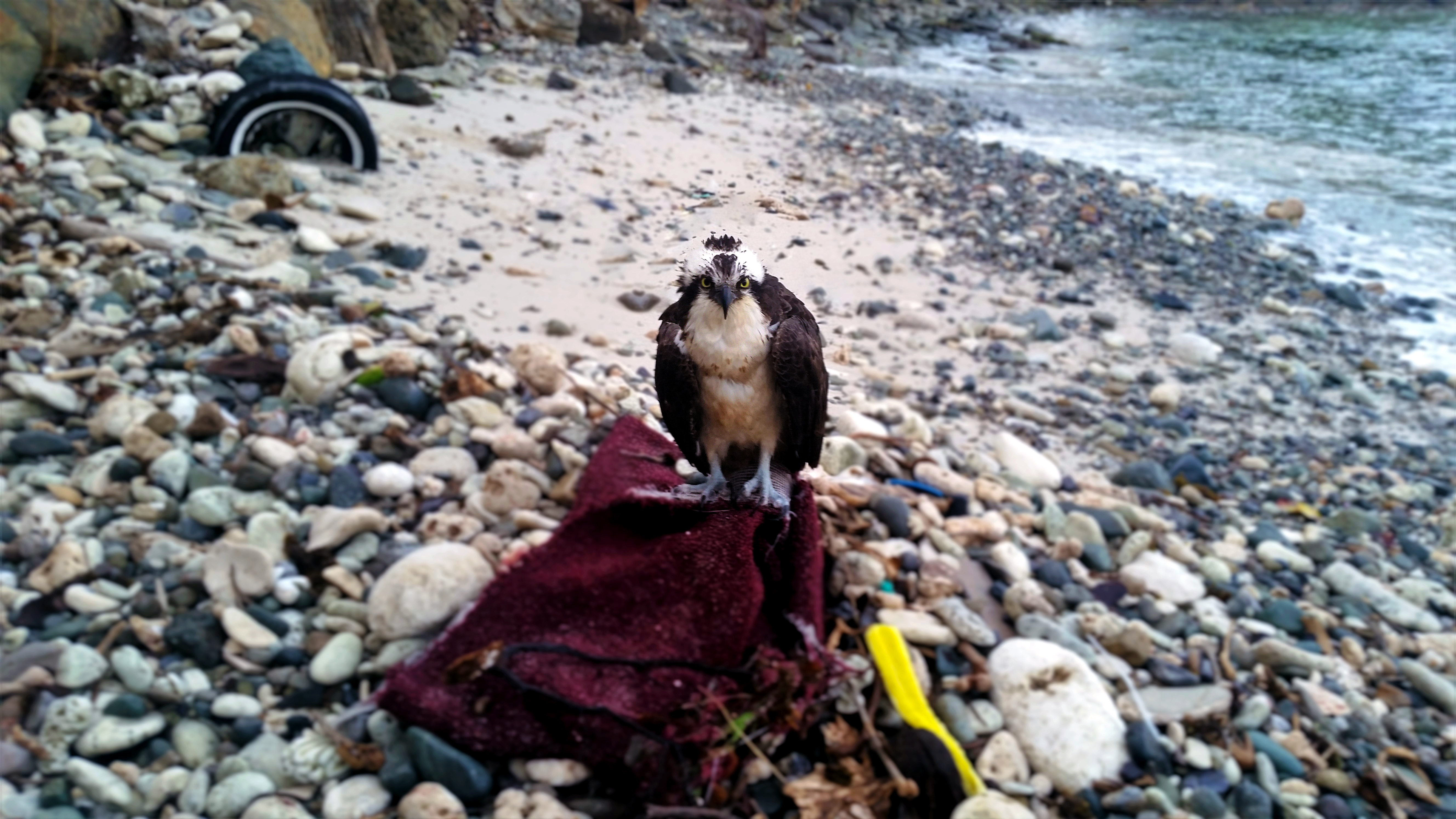
IT WAS LATE SUNDAY AFTERNOON, October 30, when I got the call.
For some time Anna and Alcedo “Justin” Francis had been observing a large bird-of-prey sitting on the narrow rocky shoreline of Tutu Bay. As increasing waves crashed closer to the bird it was having obvious difficulty keeping back from the dangerous waters.
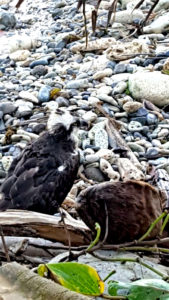
TUTU BAY AND CELL PHONE SERVICE ARE LIKE OIL AND WATER. They do not mix. By the time Anna managed to contact me, I could hear a sense of urgency in her voice.
“The bird has been like that for a while and we think it may be injured”, Anna explained. “We don’t know if we need to call for help. Justin sent a picture, but if you didn’t get it, can you come down and see”?
Of course I could.
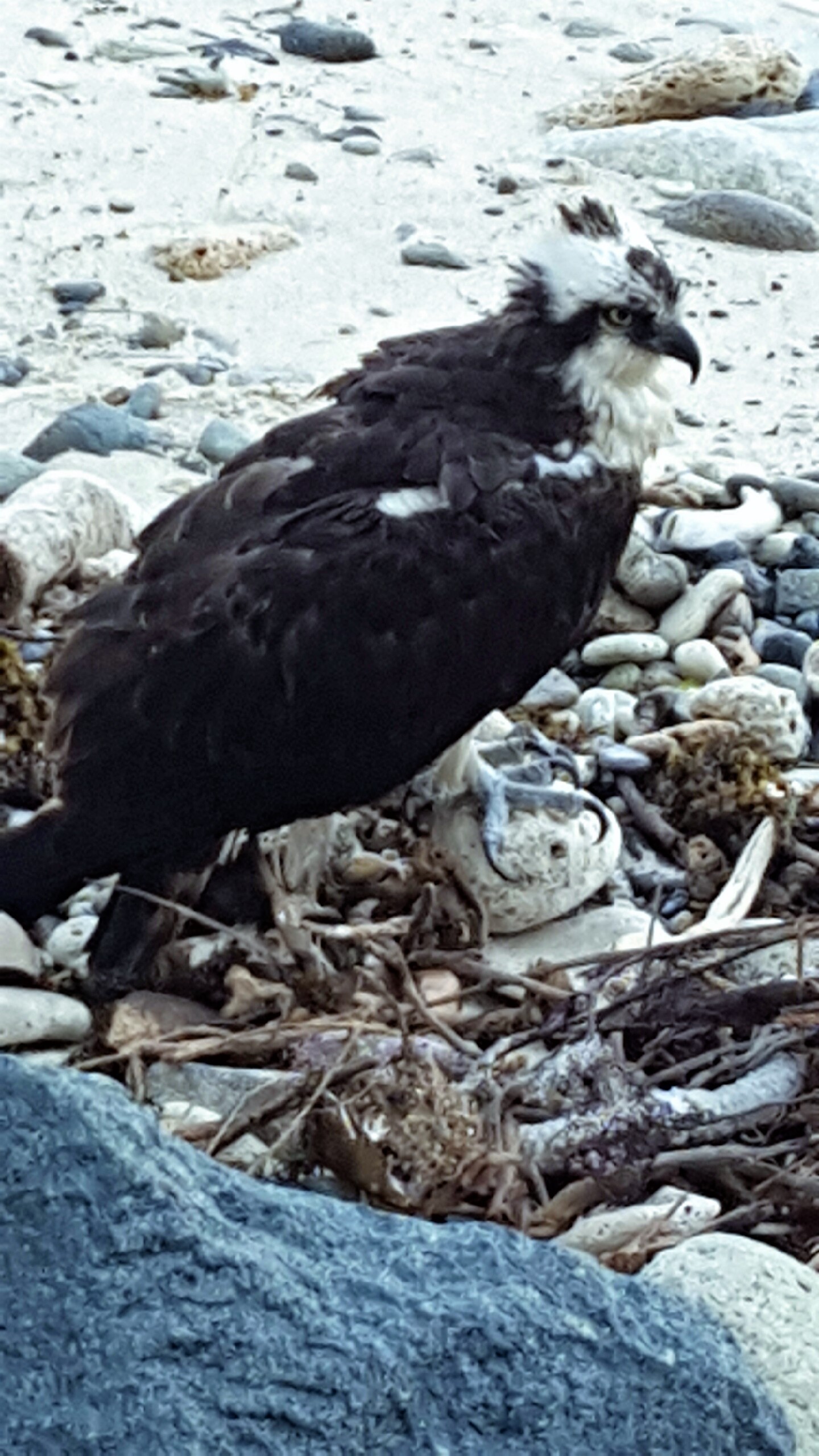
WHAT IS IT?
The Francis’ were not certain what species of bird it was and sent an image to my phone that had not yet arrived. I was just emerging from filming in the bush, also outside of cell range, so we were forced to communicate the old fashioned way: Meet face-to-face.
UPON MY ARRIVAL AT TUTU BAY I immediately knew something was amiss. In my outdoors experience, birds of prey do not just sit down and cool out on pebble beach shorelines at sunset.
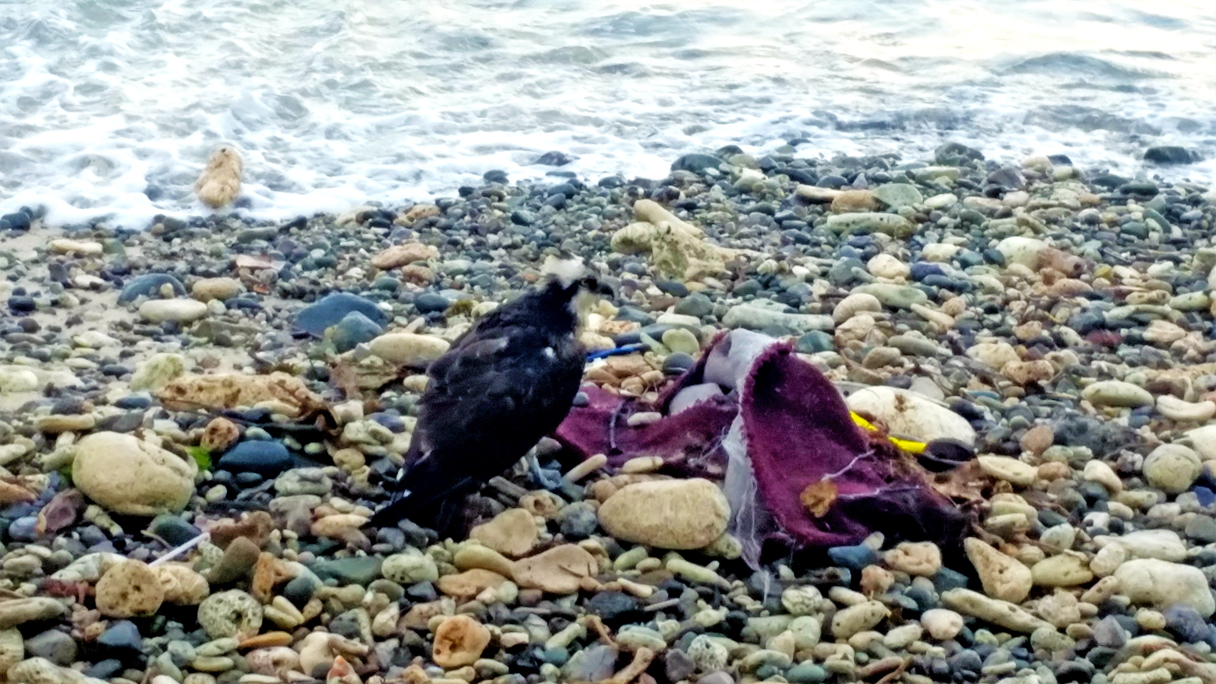
I WALKED A WIDE PERIMETER around the bird and, while it turned its head to follow me, it did not attempt to retreat as is common behavior.
I made a cautious approach, stopping about 7 feet away. It was too weak to flee and unsteady on its legs; twice having almost fallen over. I backed away and told Justin we should call for help.
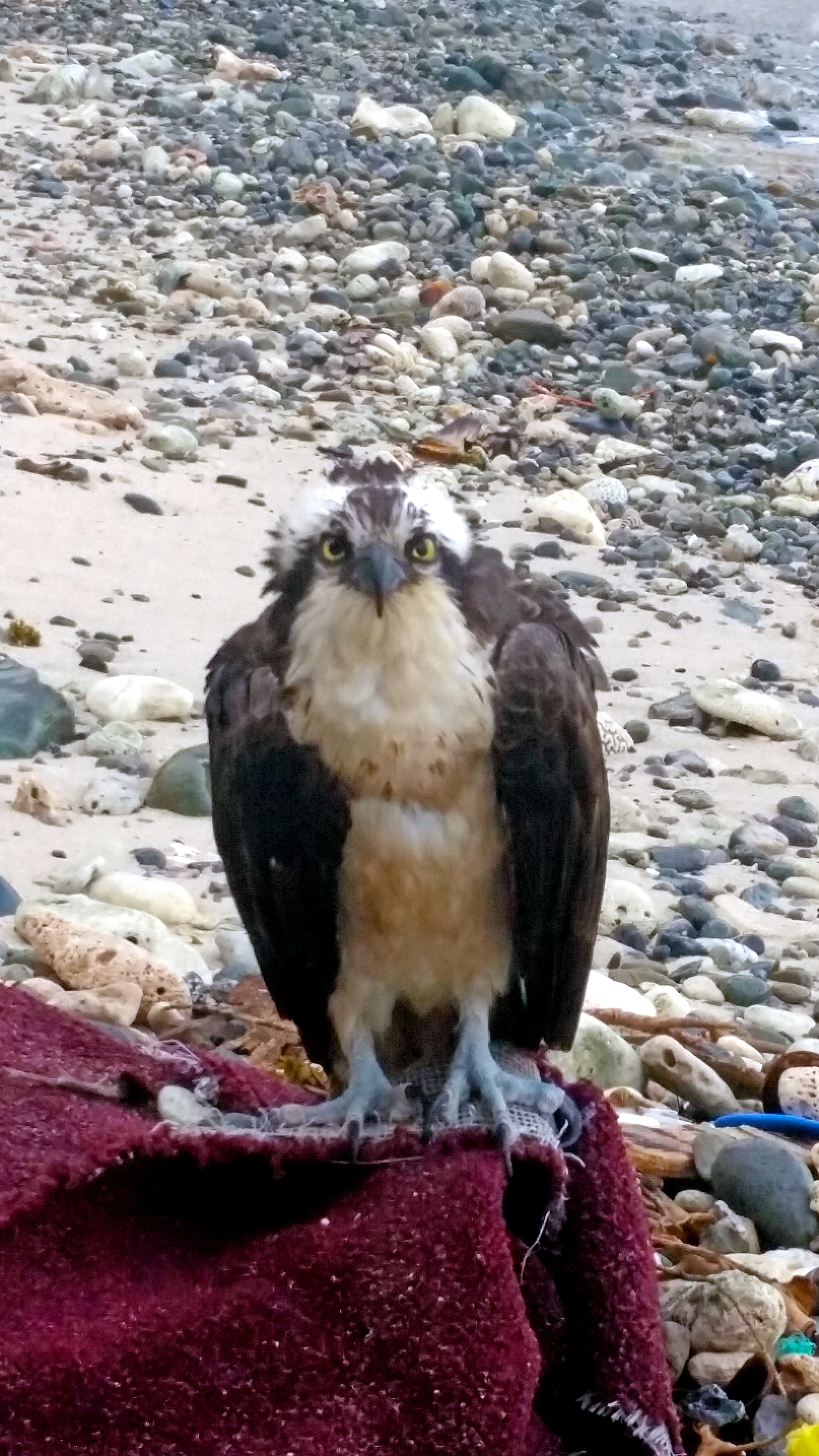
NO OFFICIAL HELP AVAILABLE:
Of course it was Sunday and government fish and wildlife resources were shut down. An attempt was made to contact S.T.A.R. (volunteer Sea Turtle Assistance and Rescue) that was met with a recording. Our last hope was Erica Palmer and for mysterious reasons, no one present had her number available. Jason Quetel, a possible link to Erica, was called instead but also was unreachable at the time.
So we tried Facebook, which meant a short hike uphill to get a weak signal, and left a message on Erica’s page.
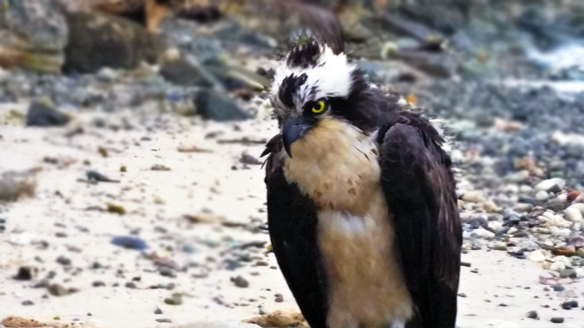
FACEBOOK TO THE RESCUE:
The message got posted, but signal died and I had no way of knowing if my message was read or responded to by Erica. (It turns out that Erica answered, but there was no way for us to know).
The waves were coming in harder and nightfall was rapidly darkening the beach. The stricken bird could not retreat from the waves, much less the stray dogs and cats that roam our coastlines at night. After some discussion, an executive decision was made to capture the bird and drive it to Coral World, the Humane Society or a vet.
We made a very slow and cautious approach so as not to startle the injured creature. However, the bird was so weak it gave no resistance to being handled and placed into a cage.
As we were loading our rescued sea bird into the back of my SUV, Jason reached me on my cell phone. He had found Erica Palmer.
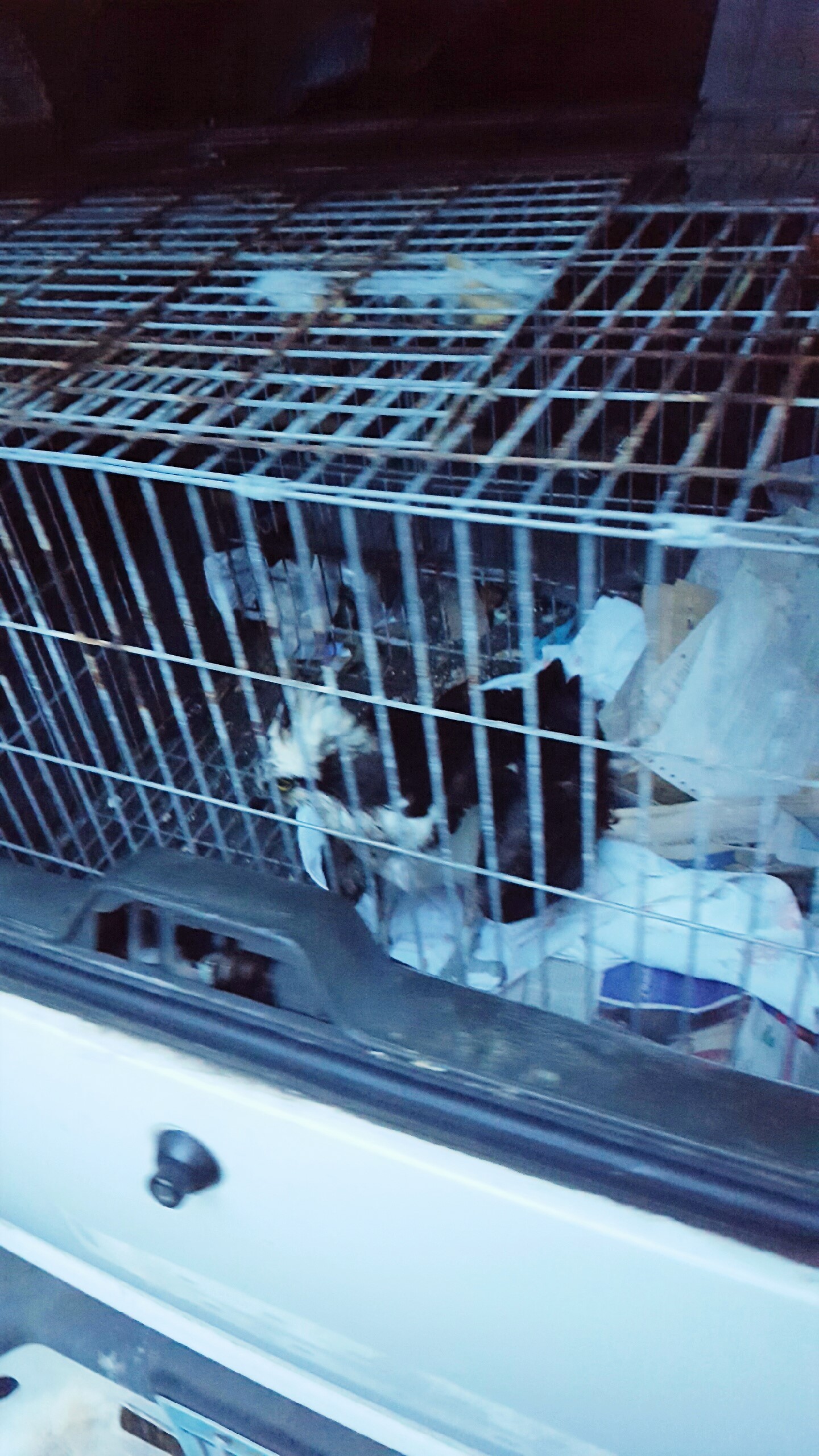
STAY WHERE YOU ARE. HELP IS COMING:
“Stay put,” Jason shouted over a poor signal. “I am coming down and Erica is just 10 minutes out”.
Thank goodness! Help was on the way.
To say that I, Anna and Alcedo were beyond our layperson’s expertise with injured wildlife would be an understatement. Absent guidance from government resources we made a huge leap of faith that our combined knowledge could safely secure a large and injured wild bird. For the bird to stay on the shoreline much longer would almost certainly have meant its death. We also had to consider whether or not we could capture the bird without causing further injury to it or even ourselves.
Until Erica’s arrival minutes later, we were also uncertain what species the bird was. Could it be a Chicken Hawk? Or maybe a young Osprey?
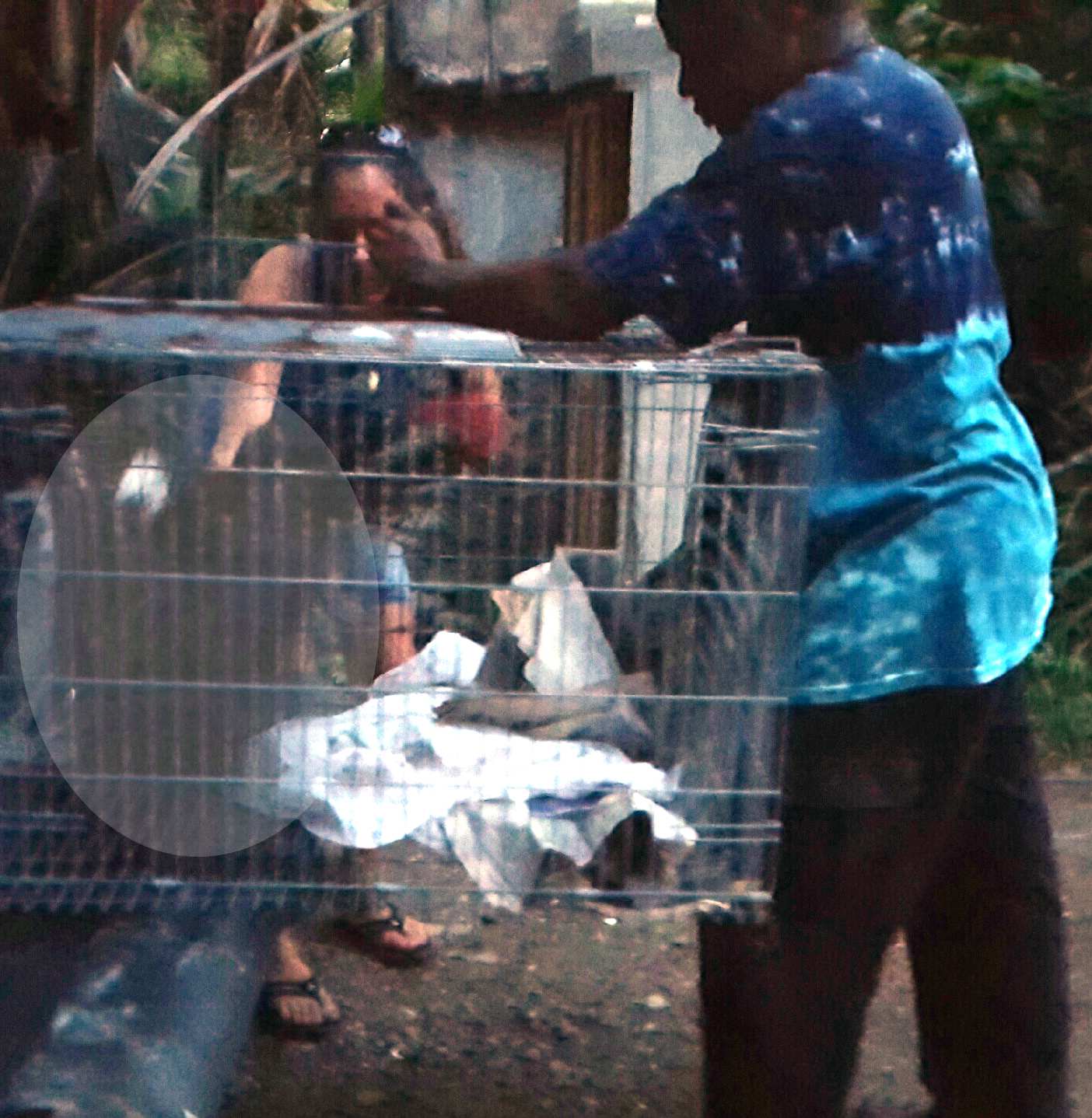 ERICA ARRIVED AT TUTU BAY as darkness was descending in full. She expertly took charge, retrieved the bird from our cage and did a field assessment of its condition.
ERICA ARRIVED AT TUTU BAY as darkness was descending in full. She expertly took charge, retrieved the bird from our cage and did a field assessment of its condition.
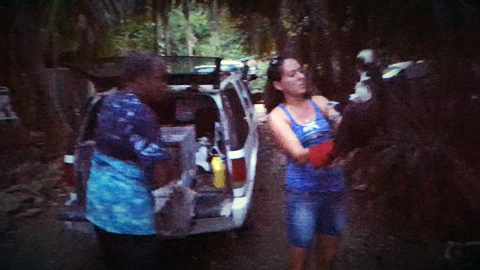
“I CANNOT FIND ANY VISIBLE INJURY but it is extremely weak,” she said as the bird, feet gripped by Erica’s expertly gentle gloved-hands, stretched out a giant wing. “I’m glad you called”.
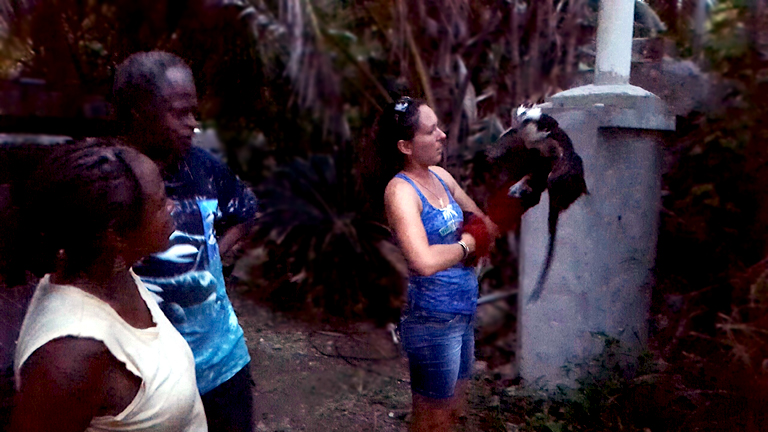 CAN YOU TELL WHAT SPECIES IT IS”, I asked. “Chicken Hawk or Osprey”?
CAN YOU TELL WHAT SPECIES IT IS”, I asked. “Chicken Hawk or Osprey”?
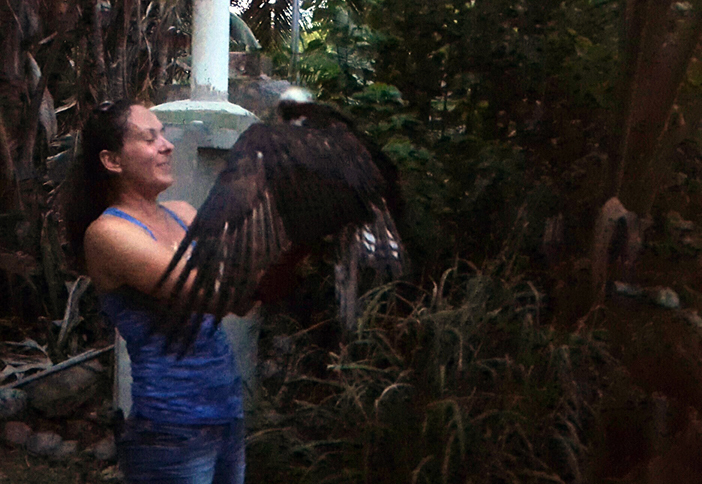 AN OSPREY
AN OSPREY
“This is most definitely a young osprey”, Erica smiled as she placed the bird in a large kennel in the back of her vehicle. 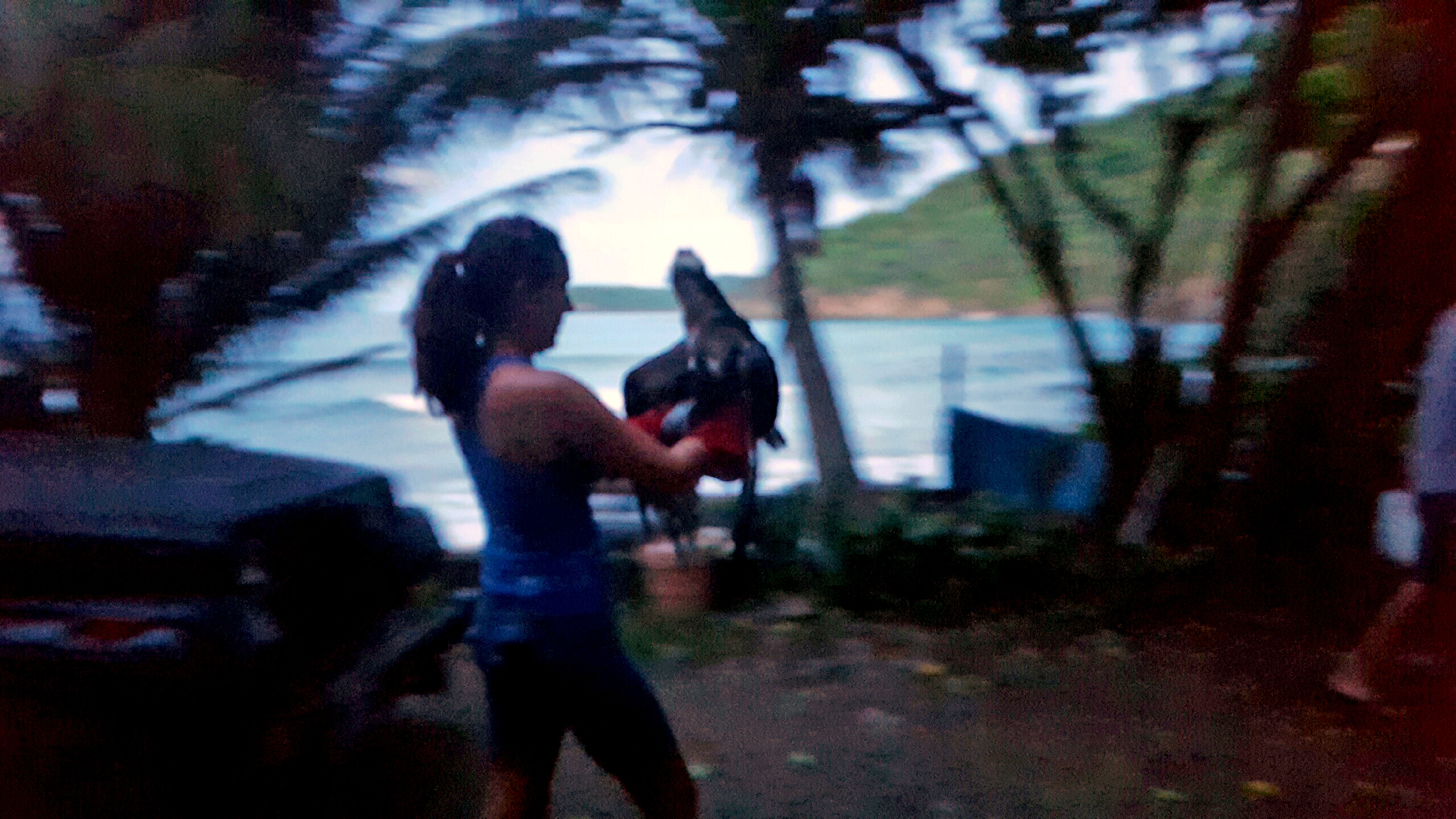 WHILE THE BIRD SETTLED IN and calmed down to its temporary mobile surroundings, Erica gave us a short and much appreciated lesson on identifying the differences between the Red-Tailed Hawk (Chicken Hawk) and the local subspecies of Osprey we rescued.
WHILE THE BIRD SETTLED IN and calmed down to its temporary mobile surroundings, Erica gave us a short and much appreciated lesson on identifying the differences between the Red-Tailed Hawk (Chicken Hawk) and the local subspecies of Osprey we rescued.
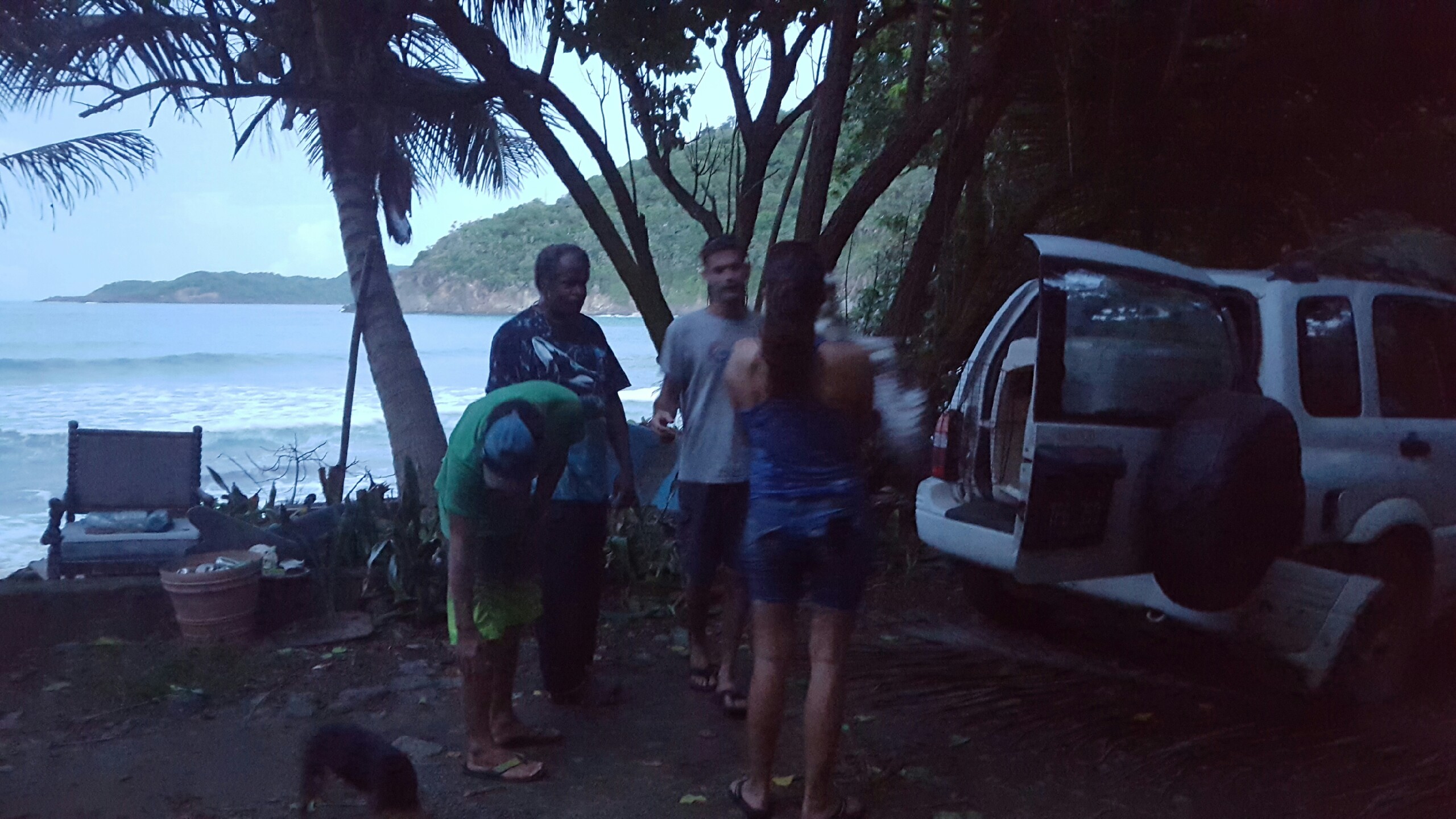
…….
MONDAY, OCT. 31 UPDATE: A 1:00 P.M. call to Erica on Monday afternoon confirmed that the Osprey is still alive, has been given food but is still very weak with no prognosis as yet for its future survival. It is too early to determine what is wrong with the bird. Blood samples have been taken to be sent for laboratory analysis. Results will take at least a few days to obtain.
Thank you, Erica Palmer and Jason Quetel for coming to the rescue!
~ Osprey rescue images by Alcedo “Justin” Francis, Anna Francis and Karl Callwood.
Note: Imagery is dark, grainy and hazy in the early evening lighting as we did not wish to use flash, bright lights or noise-causing equipment that had a high probability of startling the Osprey and causing it shock, stroke or heart attack. My experience has taught me that even the minor click of a DSLR camera shutter closing can surprise wild birds. Silenced cell phone cameras were utilized for image capture.

